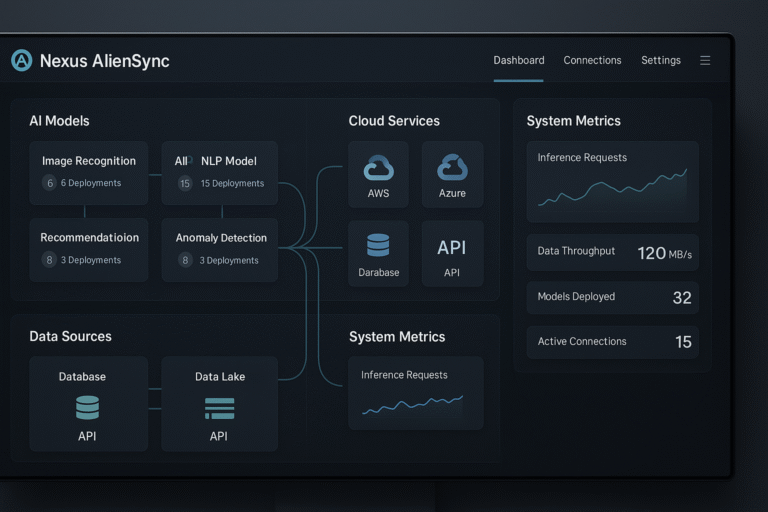
Introduction
The Standard Operating Procedure (SOP)—also known universally as the protocolo operacional padrao—is the single most powerful tool for ensuring consistency, quality, and efficiency in any business. If you’ve ever dealt with product defects, employee confusion, or inconsistent service delivery, your search for a solution ends here.
This comprehensive guide provides executives, quality managers, and team leaders with the expertise to not just write SOPs, but to successfully implement them, transforming your operations from chaotic to consistently excellent. By adopting a standard, documented approach, you can guarantee the same high result, regardless of who is performing the task, which is the cornerstone of scalable business growth. Understanding the protocolo operacional padrao is key to managing risk and achieving true operational control.
1. What Exactly is an SOP? Defining the Operational Blueprint
A Standard Operating Procedure (SOP) is a formal, step-by-step document that details exactly how a specific routine task or activity should be carried out within an organization. It is the official, written instruction for getting a job done correctly, safely, and efficiently. When discussing best practices in quality management, this document is often referred to in Portuguese-speaking regions as the protocolo operacional padrao.
H3: The Core Goal of the Protocolo Operacional Padrao
The fundamental purpose of the SOP (or protocolo operacional padrao) is to eliminate variability. By documenting the one “best way” to perform a task, you ensure that every team member follows the same procedure, leading to predictable and high-quality outcomes every single time. This is fundamental for managing risk and achieving regulatory compliance.
- Process vs. SOP: The process defines the series of activities (the what and why), while the protocolo operacional padrao defines the how, providing the overarching rules for managing the process itself.
- Uniformity is Key: Whether you call it an SOP or the protocolo operacional padrao, the end result must be the same: a clear, consistent instruction set that allows for easy training and auditing.
2. Unlocking Business Growth: The Core Benefits of the SOP
Implementing robust Standard Operating Procedures (the protocolo operacional padrao) isn’t just bureaucratic paperwork; it’s a strategic move that drives profitability, safety, and brand value. Companies that prioritize standardization, like those following ISO 9001 guidelines, consistently report superior operational metrics, proving the value of the protocolo operacional padrao.
Consistency, Quality, and Error Reduction
The most immediate benefit of the protocolo operacional padrao is the guarantee of product and service consistency.
- Predictable Quality: An SOP ensures that the output meets defined quality benchmarks. If the protocolo operacional padrao is followed correctly, the result will always be the same. This is crucial for customer satisfaction and brand trust.
- Reduced Rework: By clearly detailing the correct steps within the protocolo operacional padrao, these documents dramatically reduce human error. The mantra is: Do it right the first time. A Harvard Business Review study suggested that errors and reworks can consume 20-30% of a company’s capacity.
- Faster Troubleshooting: When an error occurs, the protocolo operacional padrao provides a documented baseline. You can quickly identify if the error was due to a deviation from the SOP or a flaw in the SOP itself, accelerating problem-solving.
Empowering Your Workforce and Protecting Knowledge
The protocolo operacional padrao is a powerful tool for human resource management and knowledge retention.
- Rapid Onboarding: The protocolo operacional padrao serves as the primary training material for new hires. They reduce the time and cost associated with training, allowing new team members to reach productivity faster.
- Knowledge Preservation: When an expert employee leaves, their operational knowledge doesn’t walk out the door with them. The protocolo operacional padrao captures that critical institutional memory, making the business resilient to staff turnover.
- Employee Confidence: Clear instructions reduce ambiguity and stress. Employees feel more confident and competent when they know exactly how to handle routine, complex, or even emergency situations according to the approved protocolo operacional padrao.
The Blueprint: How to Structure an Effective Protocolo Operacional Padrao
A successful protocolo operacional padrao must be clear, easy to read, and accessible. If it looks like a complex legal document, it won’t be used. We recommend a structured, template-based approach to writing every protocolo operacional padrao in your system.
Essential Structural Components
Every high-quality protocolo operacional padrao should contain these six critical sections:
- Identification Block (The ID): This ensures control and traceability. Every protocolo operacional padrao needs a unique identifier.
- Title: Clear name of the procedure (e.g., “Receiving Raw Materials”).
- SOP ID/Code: A unique identifier (e.g., POP-PROD-005-V2.1). The code tracks the department, sequential number, and version.
- Effective Date/Revision Date: When the current version was approved and implemented.
- Authorization: Signatures of the preparer, reviewer, and final approver.
- Purpose and Scope: Briefly states why the protocolo operacional padrao exists and who must follow it.
- Definitions/Acronyms: Explains any technical terms or jargon used.
- Responsibilities: Clearly lists the roles (not people’s names) responsible for each part of the procedure.
- Procedure Details (The Steps): The core of the protocolo operacional padrao, using clear, numbered, sequential steps.
- References/Attachments: Lists any related forms, safety data sheets (SDS), or Work Instructions (WIs).
Writing Actionable, Step-by-Step Instructions
The procedure details section of your protocolo operacional padrao must be written for the user on the floor.
- Use a numbered list for sequence, and bullet points for lists of items or checks within a step.
- Start every step with a clear, active verb. (e.g., Check, Open, Verify, Record).
- Include Control Points: Identify steps where quality checks or mandatory sign-offs must occur (e.g., “STOP: Obtain Supervisor Sign-off before proceeding to Step 7”).
Implementation and Continuous Improvement: Making the Protocolo Operacional Padrao Work
An SOP, or protocolo operacional padrao, is only useful if it is actively used and maintained. The transition from a document on a server to an embedded cultural practice requires commitment and strategy across the entire organization.
Strategy for Successful Implementation
- Train the Team (The “Why”): Explain why the new protocolo operacional padrao is the best way—how it improves their safety, speed, or accuracy. Engagement is highest when employees understand the benefit to them.
- Make It Accessible: The protocolo operacional padrao must be easy to find. Utilize a central document management system or place laminated, condensed versions (Work Instructions) directly at the workstation.
- Audit and Monitor: Leadership must routinely verify that the protocolo operacional padrao is being followed. Use simple checklists or audits to compare the actual process to the documented procedure.
The SOP Life Cycle: Review and Revision
A protocolo operacional padrao that is not reviewed is obsolete. Your SOPs must be treated as living documents.
- Scheduled Reviews: Set a mandatory review date (e.g., every 6 or 12 months), regardless of changes. This ensures the protocolo operacional padrao remains current.
- Triggered Revisions: Revise the protocolo operacional padrao immediately following any significant event: equipment change, regulatory change, a major quality failure, or a continuous improvement suggestion from the team.
- Involve the User: The employees who perform the task are your best auditors. Their feedback should drive the revision process for the protocolo operacional padrao.
Technology and the Future of Operational Protocols
Modern businesses move fast, and paper-based protocolo operacional padrao documents can’t keep up. Leveraging technology is the key to managing hundreds of protocols effectively.
- Digital Platforms: Specialized quality management software (QMS) automates the entire protocolo operacional padrao lifecycle. They manage version control, approval workflows, and distribution, ensuring every user automatically sees the latest, approved document.
- Visual SOPs (Videos/Infographics): For complex or mechanical tasks, a text document is often insufficient. Supplement your text-based protocolo operacional padrao with short, high-quality training videos or visual checklists (infographics). These enhance understanding and dramatically improve adherence.
- Mobile Accessibility: Provide access to the protocolo operacional padrao via mobile apps or tablets on the floor. An employee should be able to instantly pull up the “Safety Procedure for X” right at the machine using a QR code linked to the SOP’s unique ID.
Conclusion: Build Your Legacy of Consistency
The Standard Operating Procedure (SOP), or protocolo operacional padrao, is not just a tool for today; it is an investment in your company’s future resilience and scalability. By standardizing your processes, you build an organization that can consistently deliver the same high quality, onboard new talent quickly, and withstand the inevitable challenges of staff and market changes. Start small, select a critical process, map the steps with your team, and formalize that best practice today. This simple act of documentation will be the foundation of your operational excellence.






